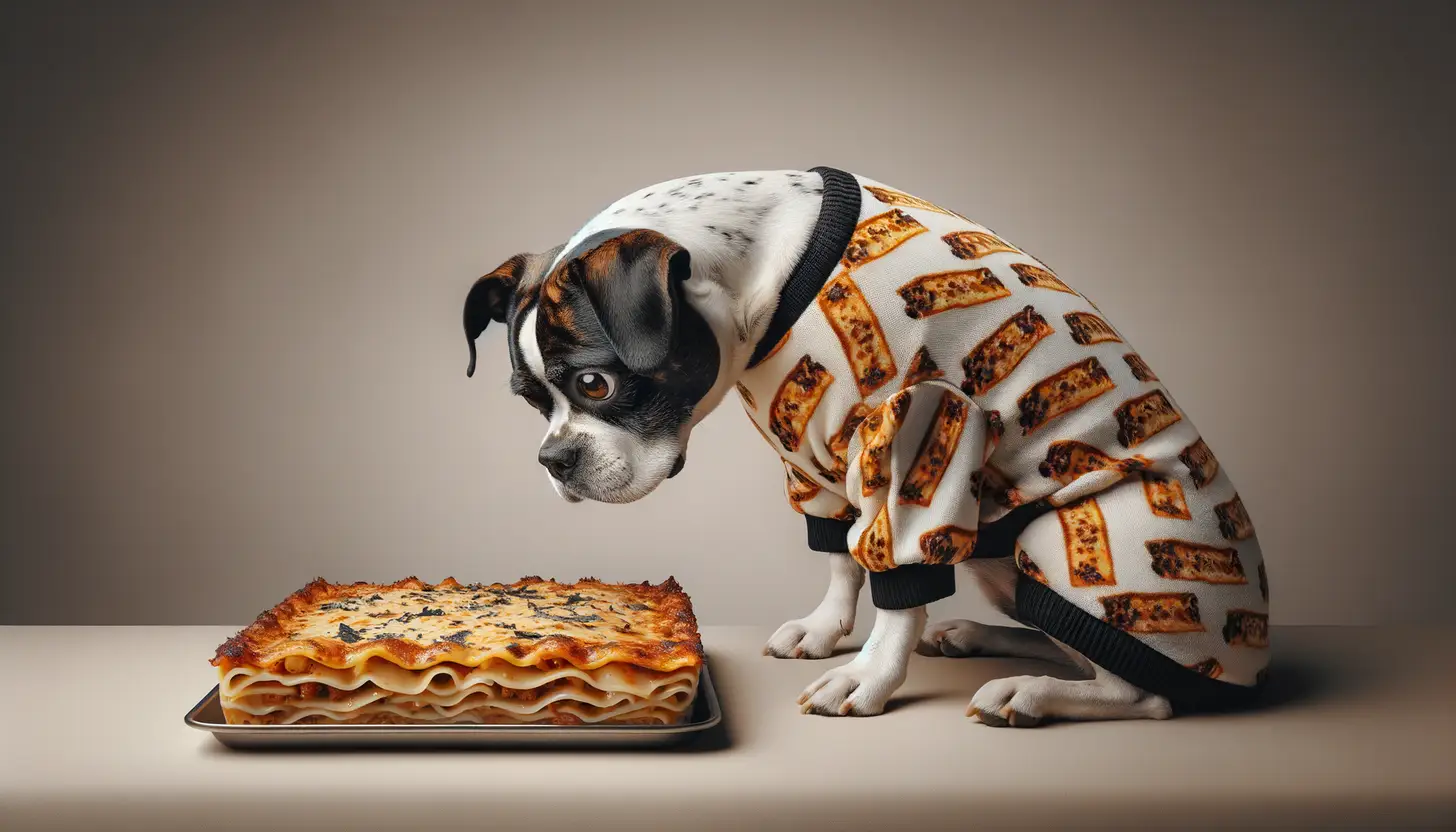
Can Dogs Eat Lasagna?
No, dogs should not eat lasagna. While it might be tempting to share a delicious slice with your furry friend, lasagna contains ingredients that can be harmful to dogs, such as garlic, onions, and rich cheeses. These ingredients can cause digestive upset and other health issues that could land your pup in the vet's office.

By Stefan Stumpfl, in collaboration with Dr. Ali Raza.
Updated on Jun 24, 2024
One of the key ingredients in lasagna is garlic, which is toxic and can lead to serious health issues like hemolytic anemia in dogs.
Lasagna
Nutrition
Taste
Digestibility
Feeding Frequency
Allergic Risk
Why is Lasagna Bad for Dogs?
Lasagna is a medley of ingredients that are unhealthy for dogs. Garlic and onions are especially problematic, as they can damage red blood cells and lead to anemia. Additionally, the high fat content from cheese and the pasta's carbohydrate load can cause digestive issues and contribute to obesity. These factors make lasagna a dangerous choice for your canine companion.
How Much Lasagna Can Dogs Eat?
Ideally, dogs should not eat lasagna at all. However, if your dog accidentally consumes a small amount, keep an eye on them for any adverse reactions like vomiting, diarrhea, or lethargy. If any symptoms appear, consult your veterinarian right away. In general, avoid making lasagna a part of their regular diet to prevent any health complications.
Common Misconceptions
Some people think that a small piece of lasagna won’t harm their dog. However, even a tiny amount of garlic or onion can be toxic over time. Another misconception is that homemade lasagna is safer because it lacks preservatives, but the individual ingredients are still harmful.
Similar Harmful Products
Be cautious with these similar foods and meals, as they share many of lasagna's problematic ingredients:
- Spaghetti with marinara sauce: Contains garlic and onions.
- Pizza: Often topped with onions, garlic, and high-fat cheeses.
- Garlic bread: The name says it all—packed with garlic, a toxic ingredient for dogs.
- Stuffed pasta dishes: Ingredients like ricotta cheese and garlic are common.
What to Do If Your Dog Eats Lasagna?
If your dog eats lasagna, monitor them closely for symptoms like vomiting, diarrhea, or lethargy. Do not induce vomiting unless directed by a veterinarian. Contact your vet immediately for the best course of action. They may recommend bringing your dog in for an exam, especially if you suspect a large quantity was consumed.
Long-term, frequent consumption of harmful foods like lasagna can lead to chronic health issues, including pancreatitis and obesity. Veterinary treatments for these conditions can be costly, making pet insurance a valuable investment. It can cover unforeseen medical expenses, giving you peace of mind.
What are Healthy Alternatives?
Instead of lasagna, consider these safe and tasty treats for your dog:
- Cooked carrots: Low in calories, high in vitamins.
- Plain cooked chicken: Great source of protein without harmful additives.
- Sweet potato slices: Rich in fiber and vitamins.
Conclusion
In summary, lasagna is not a safe choice for dogs due to its harmful ingredients like garlic and onions. While a small accidental nibble may not cause immediate harm, it's best to avoid feeding lasagna to your dog altogether. Instead, opt for healthier alternatives and always consult your veterinarian for dietary advice specific to your pet's needs.